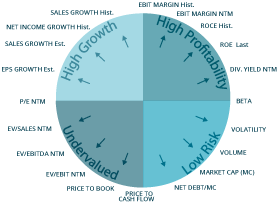Did you know ?
On the Infront Analytics platform, there are two ways to identify the listed peers which most closely resemble a private firm:
- with Peer Tracker if you already know a listed peer.
Peer Tracker is a patented technology tool for building peer groups using industry classifications. The degree of similarity between two companies is calculated comparing their sector footprints and measured using comparability scores.
- with Market Screener if you have no listed peer in mind.
Market Screener is a dedicated interface for screening companies using multiple criteria, identifying peers, searching for comparable companies in a specific business sector.

 United States of America
United States of America Factsheet
Factsheet